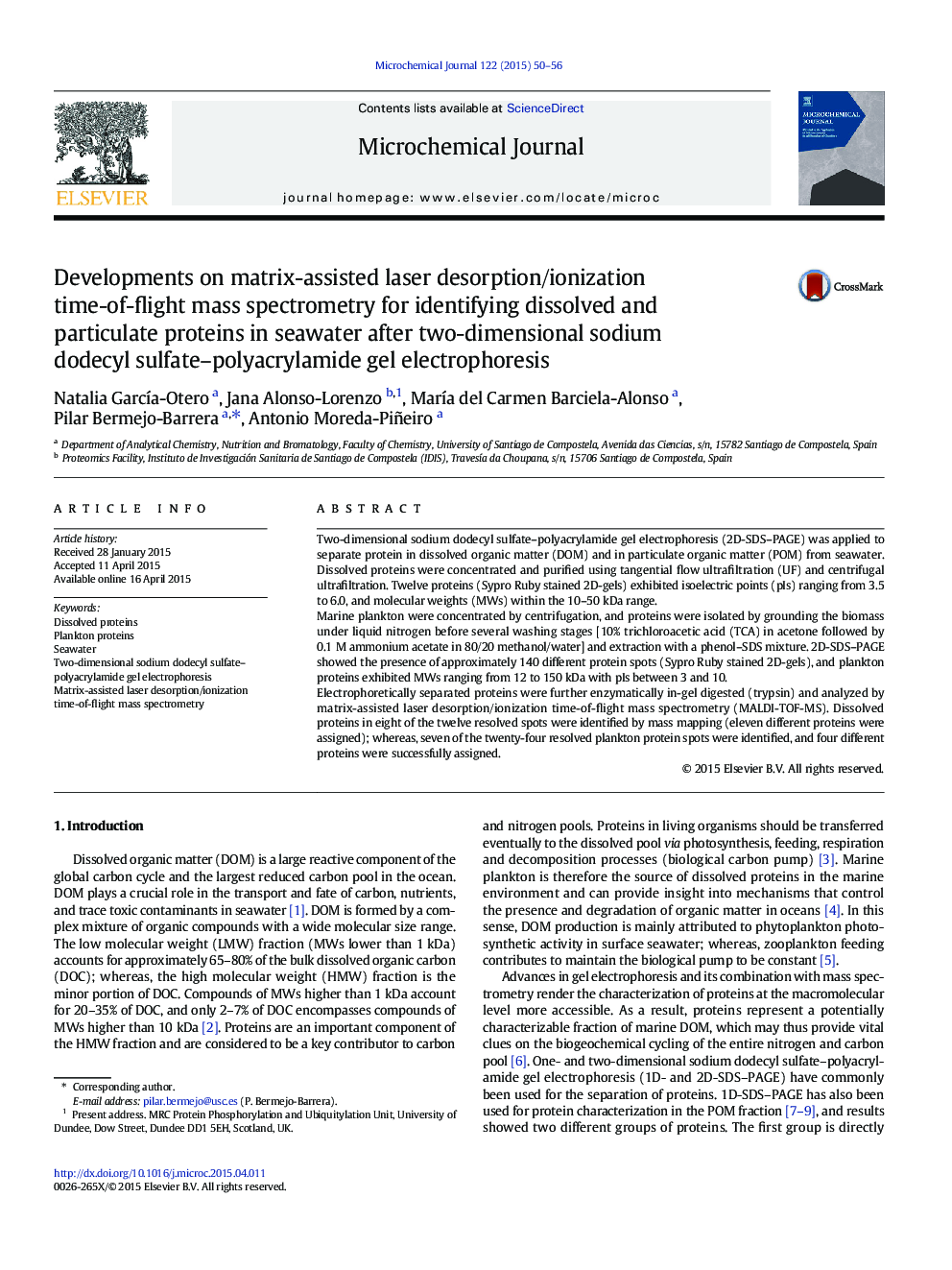| Article ID | Journal | Published Year | Pages | File Type |
|---|---|---|---|---|
| 1227759 | Microchemical Journal | 2015 | 7 Pages |
•Advances on the identification of marine proteins using MALDI-TOF-MS•Most of the dissolved proteins in seawater are membrane proteins.•In marine particulate proteins RuBisCo was identified.
Two-dimensional sodium dodecyl sulfate–polyacrylamide gel electrophoresis (2D-SDS–PAGE) was applied to separate protein in dissolved organic matter (DOM) and in particulate organic matter (POM) from seawater. Dissolved proteins were concentrated and purified using tangential flow ultrafiltration (UF) and centrifugal ultrafiltration. Twelve proteins (Sypro Ruby stained 2D-gels) exhibited isoelectric points (pIs) ranging from 3.5 to 6.0, and molecular weights (MWs) within the 10–50 kDa range.Marine plankton were concentrated by centrifugation, and proteins were isolated by grounding the biomass under liquid nitrogen before several washing stages [10% trichloroacetic acid (TCA) in acetone followed by 0.1 M ammonium acetate in 80/20 methanol/water] and extraction with a phenol–SDS mixture. 2D-SDS–PAGE showed the presence of approximately 140 different protein spots (Sypro Ruby stained 2D-gels), and plankton proteins exhibited MWs ranging from 12 to 150 kDa with pIs between 3 and 10.Electrophoretically separated proteins were further enzymatically in-gel digested (trypsin) and analyzed by matrix-assisted laser desorption/ionization time-of-flight mass spectrometry (MALDI-TOF-MS). Dissolved proteins in eight of the twelve resolved spots were identified by mass mapping (eleven different proteins were assigned); whereas, seven of the twenty-four resolved plankton protein spots were identified, and four different proteins were successfully assigned.
